In the increasingly volatile landscape of global conflict zones, humanitarian workers face significant challenges not only in delivering aid but in ensuring their own safety and protecting the confidentiality of the vulnerable populations they serve. In response to growing threats and surveillance risks, many have begun to discreetly adopt darknet services as a means of secure communication, logistical coordination, and information sharing. The darknet, which refers to parts of the internet that are intentionally hidden and accessible only through specialized tools such as Tor, offers strong encryption and anonymity. For humanitarian organizations, this level of security is critical when operating in environments where governments, militias, or hostile actors may intercept communications or retaliate against aid efforts. Using darknet platforms, humanitarian workers can coordinate safe routes for aid convoys, share real-time updates about threats or military movements, and verify identities without exposing individuals to tracking.
For example, field teams in war-torn regions might upload encrypted GPS data and medical supply requests via darknet forums or encrypted messaging boards accessible only to authorized personnel. This ensures that sensitive data does not pass through traditional internet infrastructure, which might be monitored or compromised. Moreover, whistleblowers or local citizens can submit information anonymously through darknet-based drop boxes, helping aid workers assess needs or locate at-risk populations without endangering informants. The adoption of darknet tools also enables bypassing censorship in regions where access to global news or communication platforms is heavily restricted. In such cases, humanitarian personnel can stay connected with international oversight bodies, report human rights abuses, and document war crimes in a secure manner. Importantly, these tools are not used for illicit purposes by these actors, but rather for preserving the integrity of life-saving operations under extreme duress. Training and digital literacy are key to this approach, and many organizations now provide cybersecurity education alongside traditional field training to ensure their teams can navigate the darknet safely and ethically.
Despite the clear advantages, this shift does not come without ethical and operational concerns. The stigma surrounding the Омг онион darknet often associated with illegal marketplaces and criminal activity means that humanitarian organizations must be transparent with stakeholders and ensure robust internal policies are in place. Moreover, as more aid agencies adopt encrypted communication, authoritarian regimes may further clamp down on internet freedoms or impose draconian cyber laws, potentially endangering both foreign workers and local partners. Therefore, balancing operational secrecy with accountability remains a constant challenge. Nevertheless, the emergence of the darknet as a tool for good in the humanitarian field signals a broader evolution in the way aid is delivered and coordinated. In an age where digital surveillance is omnipresent, the ability to protect sources, shield communications, and reach those in need without detection is not just advantageous it is essential. As conflict zones grow more complex and digitally contested, the use of darknet technologies by humanitarian workers may well become a standard part of the global response toolkit.
